Plus whether or not their bites can harm you.

There are nearly 3,000 spider species in North America alone, making identifying a common house spider difficult. Is it just a harmless little guy? Or a venomous predator waiting to pounce? More likely than not, the critter weaving a web on your ceiling is the former, but there’s nothing wrong with knowing the difference for your own peace of mind.
Meet the Experts: Emma Grace Crumbley, entomologist for Mosquito Squad; Roberto M. Pereira, Ph.D., entomologist and insect research scientist with the University of Florida; Marc Potzler, a board-certified entomologist and technical services manager with Ehrlich Pest Control; Howard Russell, an entomologist at Michigan State University.
Although they are rare, spider bites can happen. And even a nibble from a house spider can leave an uncomfortable welt. Here are some of the most common house spiders you might see in or outside of your abode, how to identify them, and whether you should worry about becoming their next meal. (Spoiler alert: The arachnids are more heroic than you might expect. So read before fully committing to repellents, traps, and extermination.)
American house spider
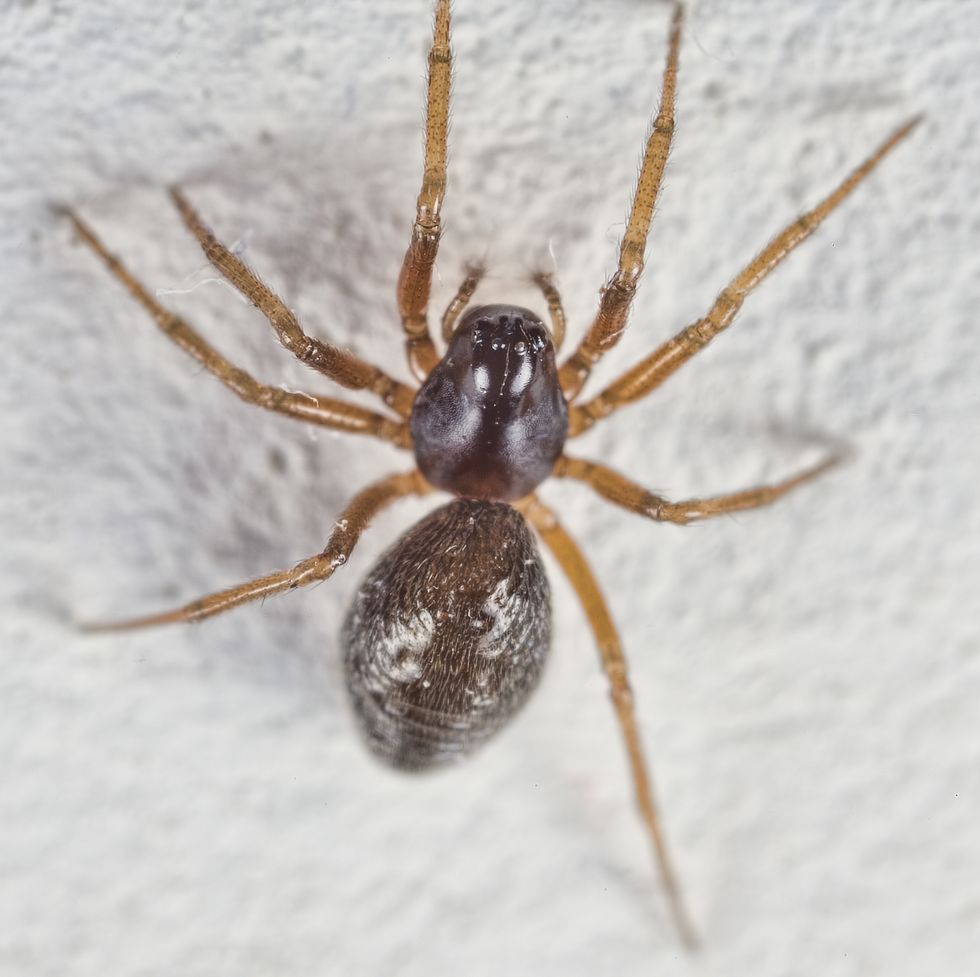 Ali Majdfar//Getty Images
Ali Majdfar//Getty ImagesWhat they look like: These spiders are on the smaller side and have a round abdomen, says Marc Potzler, a board-certified entomologist and technical services manager with Ehrlich Pest Control. “Their web often looks very tangled or messy,” he adds.
Where you’ll find them: They like to hang out in dark, concealed areas. “They hide in corners, underneath cabinets, in basements, sometimes in garages around the windows where flies may be active,” Potzler says.
Size: Nickel-sized or less than a quarter of an inch (0.6 centimeters) long
Color: Gray or brown, sometimes with white markings
Can they harm you? Nope.
Wolf spider
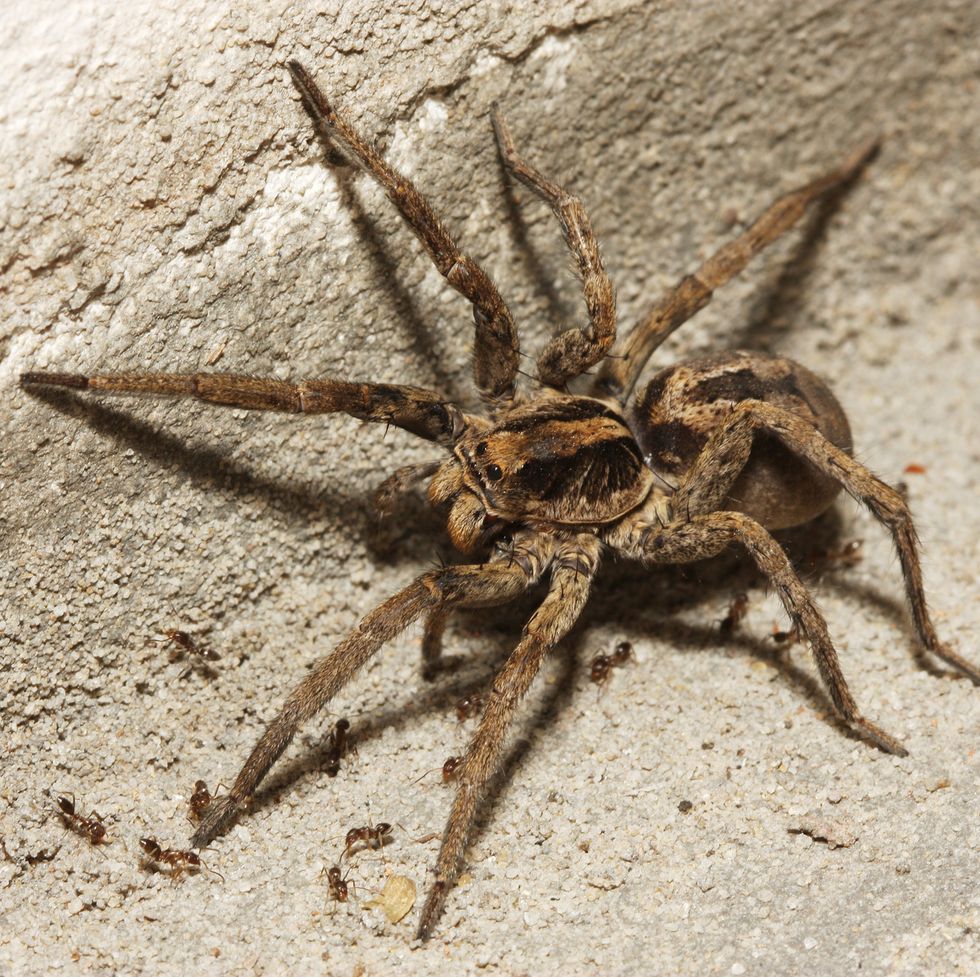 KevinDyer//Getty Images
KevinDyer//Getty ImagesWhat they look like: There are over 200 species of wolf spiders crawling around, Potzler explains. And, since they’re hairy they can sometimes be mistaken for tarantulas. Also worth noting: “These are nomadic spiders that don’t spin webs to catch their prey—they hunt them down,” says Howard Russell, an entomologist at Michigan State University.
Where you’ll find them: You can find wolf spiders where other insects reside—like garages, basements, sheds, and other dark, enclosed areas, according to Potzler. You can also find wolf spiders outside in various locations: In our around debris, underneath boards, or in gaps around your home.
Size: Ranges up to 1 and 1/2 inches long
Color: Gray, brown, or black
Can they harm you? No: Russell assures that these spiders “would prefer to hide than bite.”
Black widow
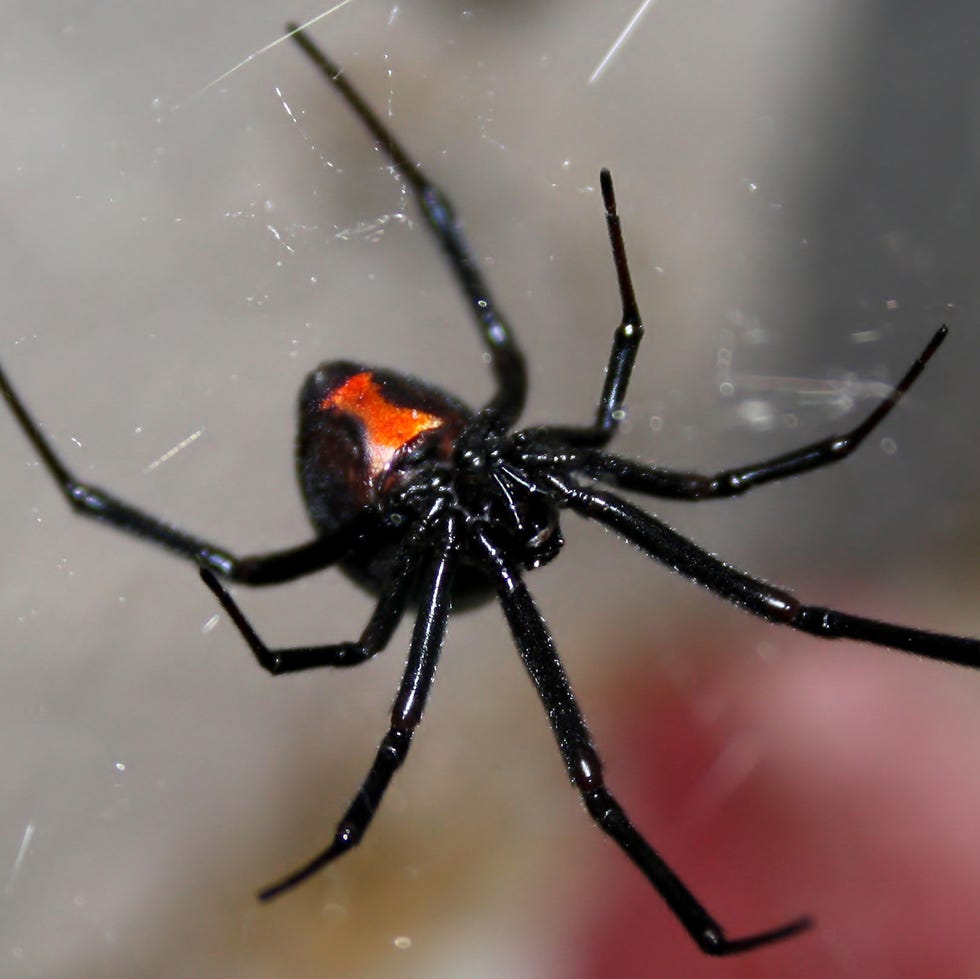 Kimberly Hosey//Getty Images
Kimberly Hosey//Getty ImagesWhat they look like: The infamous black widow has a shiny black color along with their signature, red hourglass-shaped marking on their underside, explains Potzler. “They may also have red markings going up its back,” he adds.
Where you’ll find them: Black widows prefer to dwell in places containing edges and corners, as well as tall grass, Russell notes. You can also find them hiding in mailboxes or garages, he adds.
Size: 1/4 to 1/3 of an inch long
Color: Black and red
Can they harm you? “This is one of the few species of spider that can be dangerous to people,” says Potzler. “There are approximately 2,200 bites reported each year, but there has not been a death related to a widow spider in the U.S. since 1983.” Intense pain, muscle stiffness, possible nausea, and vomiting are the telltale signs of a black widow spider bite, and these symptoms will likely occur within a few hours after being bitten, Potzler explains. Head to the ER ASAP if you suspect you’ve been bitten to get immediate treatment.
Brown recluse
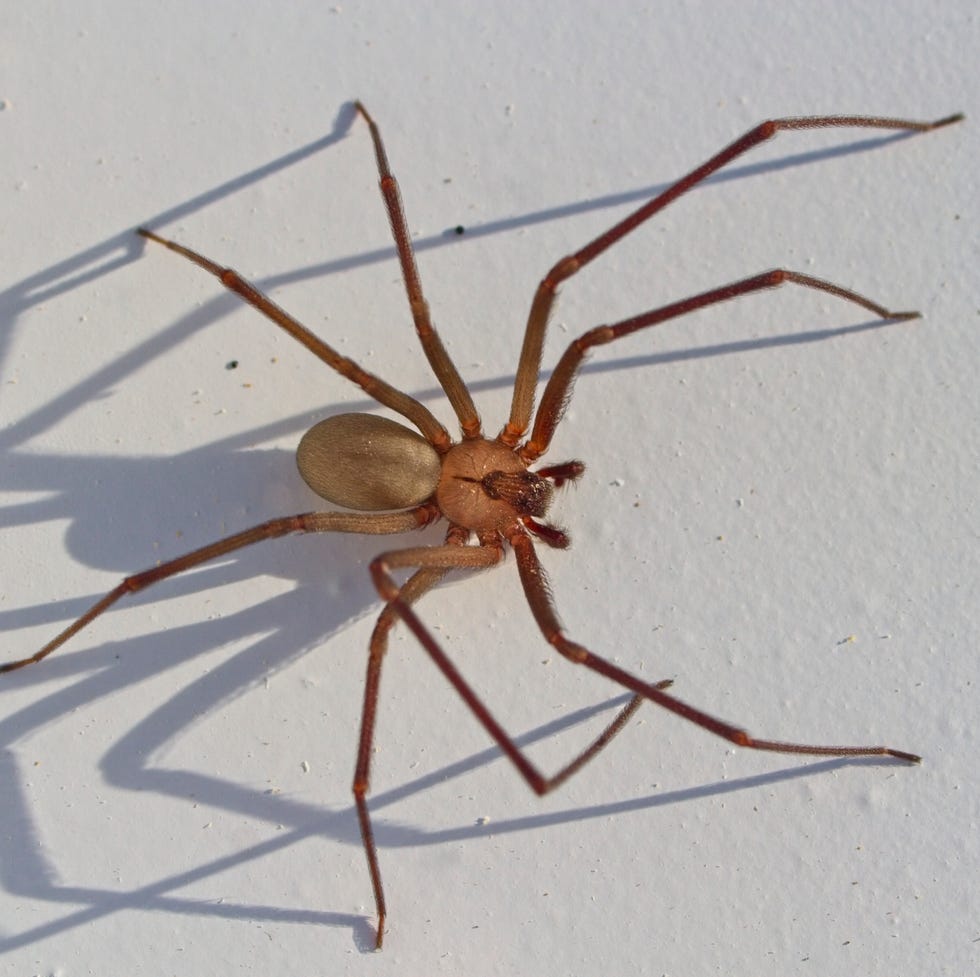 PeteMuller//Getty Images
PeteMuller//Getty ImagesWhat they look like: The brown recluse is a brown spider with a distinct “violin-shaped marking” on the top of its head and down its back, Potzler says. They also have six eyes instead of the eight that many other spiders have.
Where you’ll find them: The brown recluse likes to hang out in undisturbed corners of homes, in sheds, and in basements or cellars. “Many bites occur because the spider is hiding in folded towels and sheets, underneath a pile of clothes on the floor, or in shoes in a closet,” Potzler says. “If you live in an area where brown recluse is common, it’s a good idea to shake out your clothes and shoes, or wear gloves if you are working in your shed or garage.”
Size: Female bodies range from about 1⁄4 to 1⁄2 an inch with a leg span over 1 inch and males are generally half the size of females.
Color: Brown
Can they harm you? Yes. “The recluse can cause serious damage to people,” says Roberto M. Pereira, Ph.D., an insect research scientist with the University of Florida. “Bite sites are a serious problem.” A brown recluse bite can cause necrotizing wounds (meaning, it kills the cells and tissues around it), so you’ll want to see a doctor immediately if you think you’ve been bitten by one, Russell says.
Daddy longlegs
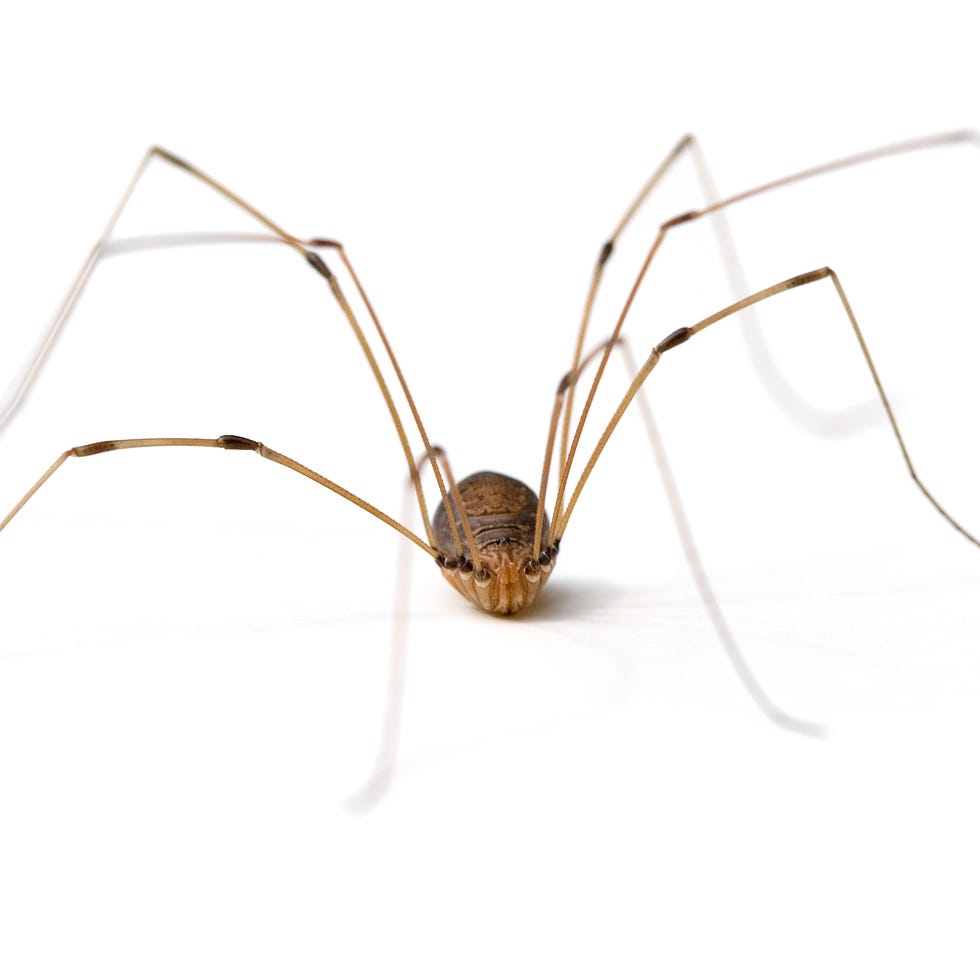 epantha//Getty Images
epantha//Getty ImagesWhat they look like: You’re probably pretty familiar with this one, but just in case: It has one round body part and very thin, long legs coming off of it.
Where you’ll find them: They like to live outside, they can sometimes hide under siding or be found on and under decks. “For the most part, you’ll find them on the lawn or up in trees,” says Potzler.
Size: Bodies range from the size of a pinhead to a quarter
Color: Brown
Can they harm you? No. “Contrary to myths found on the Internet, daddy longlegs are not venomous enough to kill a horse,” says Potzler. “They do not have venom glands. They pose no harm to humans.”
Hobo spider
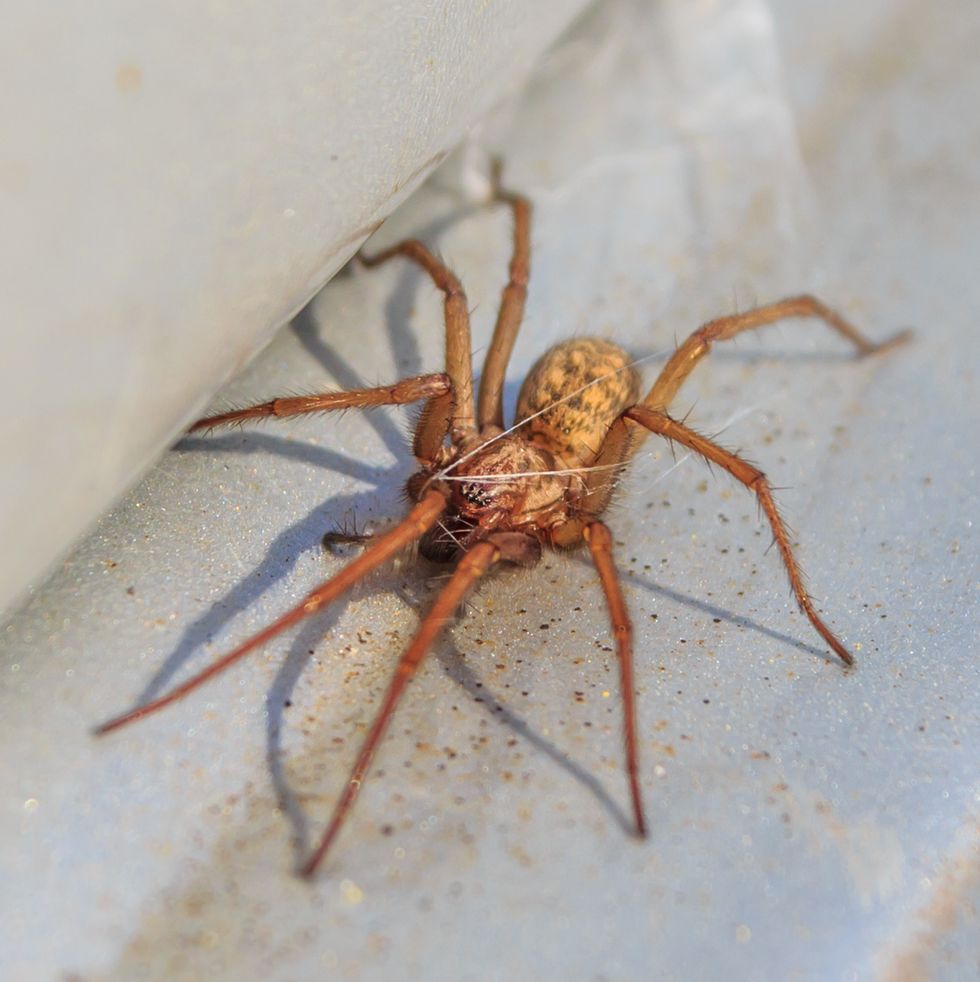 Tas3//Getty Images
Tas3//Getty ImagesWhat they look like: Hobo spiders are tannish-brown and the top of the spider may look mottled, with darker and lighter spots, Potzler says. They look pretty hairy and have spiny hairs coming off the legs.
Where you’ll find them: While they’re usually outside, they sometimes venture indoors. “It can hide in clothing, beds, and shoes,” Potzler says.
Size: About 1/2 to 5/8 inches long
Color: Light brown with pale markings
Can they harm you? Yes. “The hobo spider can inflict a painful bite that results in localized red swelling and some pain, but no necrotic lesion,” Potzler says. Usually, symptoms will get better within 24 hours with OTC painkillers and ice.
Jumping spider
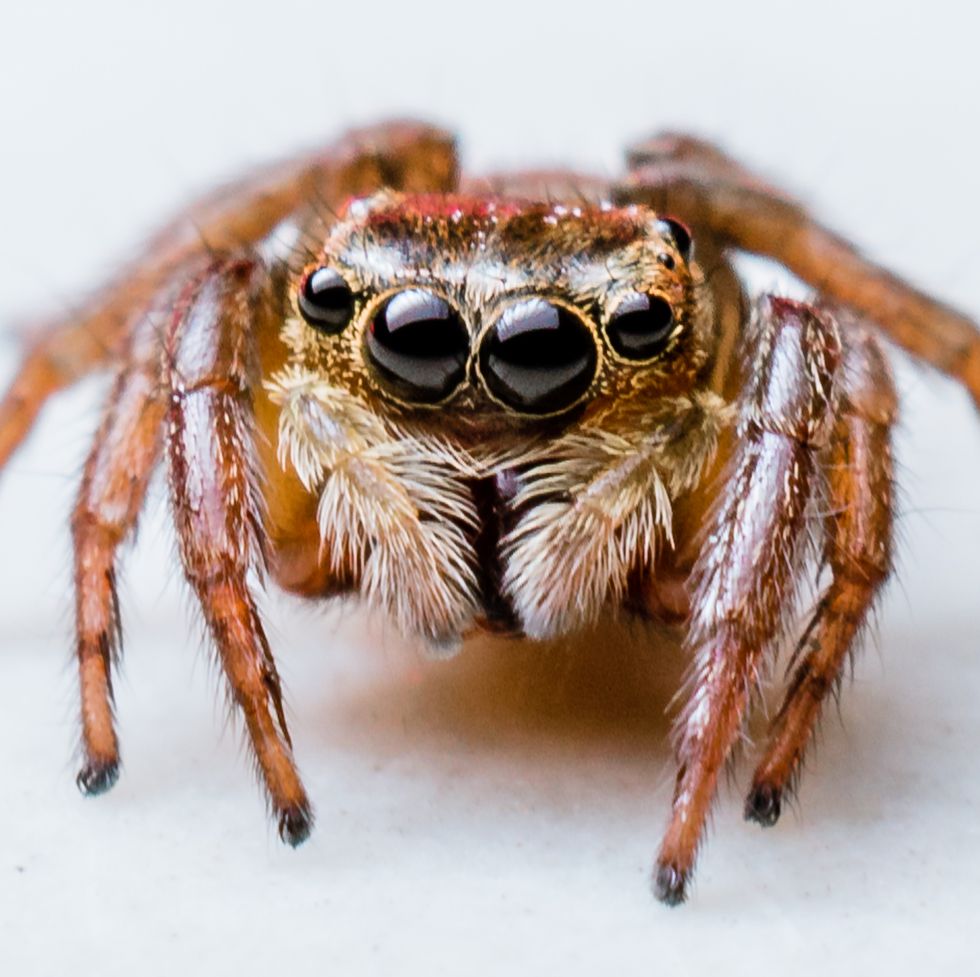 Windy Soemara//Getty Images
Windy Soemara//Getty ImagesWhat they look like: There are more than 300 species of these, and they all look a little different. “They are most easily distinguished by their very large, front middle set of eyes, although most people probably don’t want to get close enough to look at their eyes.”
Where you’ll find them: They can be just about anywhere in your house. They don’t build webs, but they’re what Potzler calls “active daytime hunters” so you can spot them at any time. “You may see them both inside climbing walls or ceilings, or hanging out in attics, or outside scaling buildings and trees,” he says.
Size: Ranges from 1/8 to ¾ of an inch
Color: “Their colors can vary from solid black with distinctive markings, to striped like a zebra, and some have iridescent markings,” Potzler says.
Can they harm you? Not really. While Russell says these spiders “may bite in defense,” it shouldn’t cause any issues for you.
Yellow sac spider
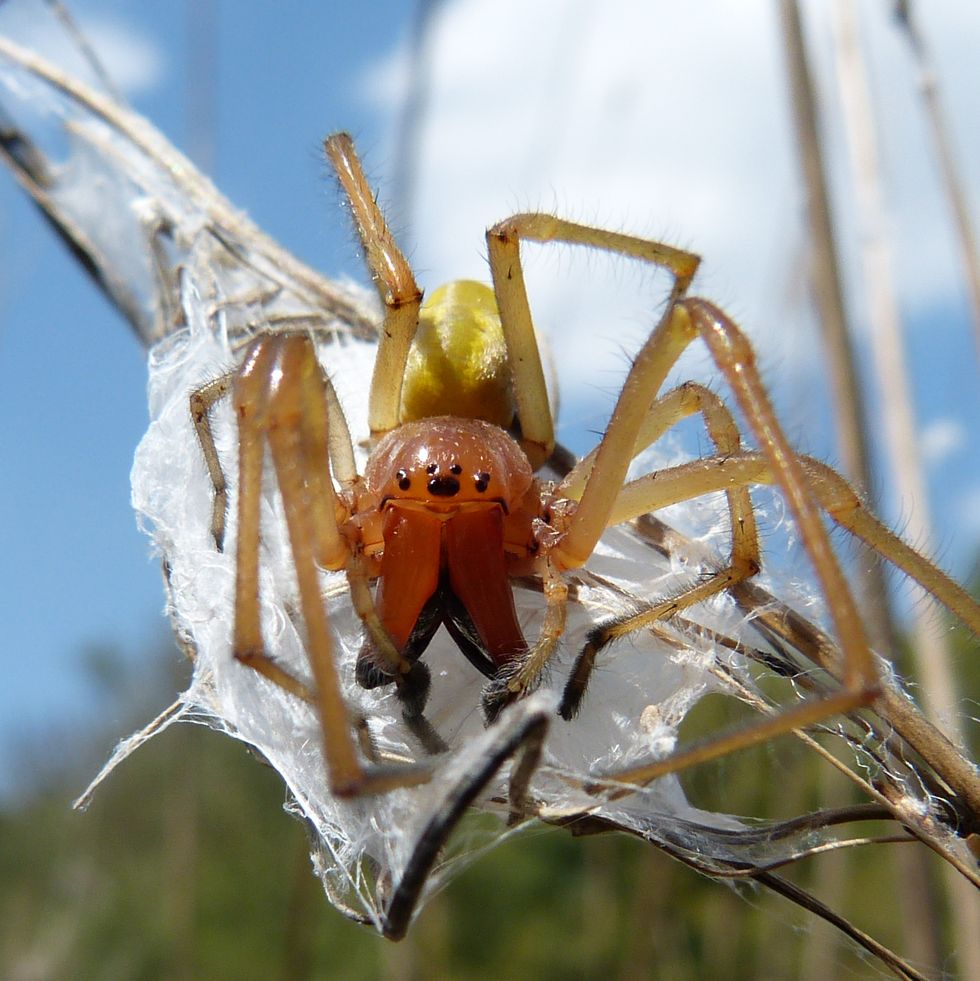 Naturalista86//Getty Images
Naturalista86//Getty ImagesWhat they look like: The spider will build a tent-like structure out of silk. “They hide in the sac during the day and then hunt at night,” Potzler says. They usually have a dark V shape on their bodies.
Where you’ll find them: Their webs are usually found at the top of the wall where it meets the ceiling or corner, Potzler says. He’s found them most often in living spaces, like living rooms, bedrooms, and kitchens.
Color: A pale beige or yellowish shade
Size: Body ranges from about 1/4 to 3/8 of
an inch in body size
Can they harm you? It’s not common for these spiders to bite “but there have been some reports of hospitalizations for individuals who have compromised immune systems or pre-existing health conditions,” Potzler says.
Orb weaver spiders
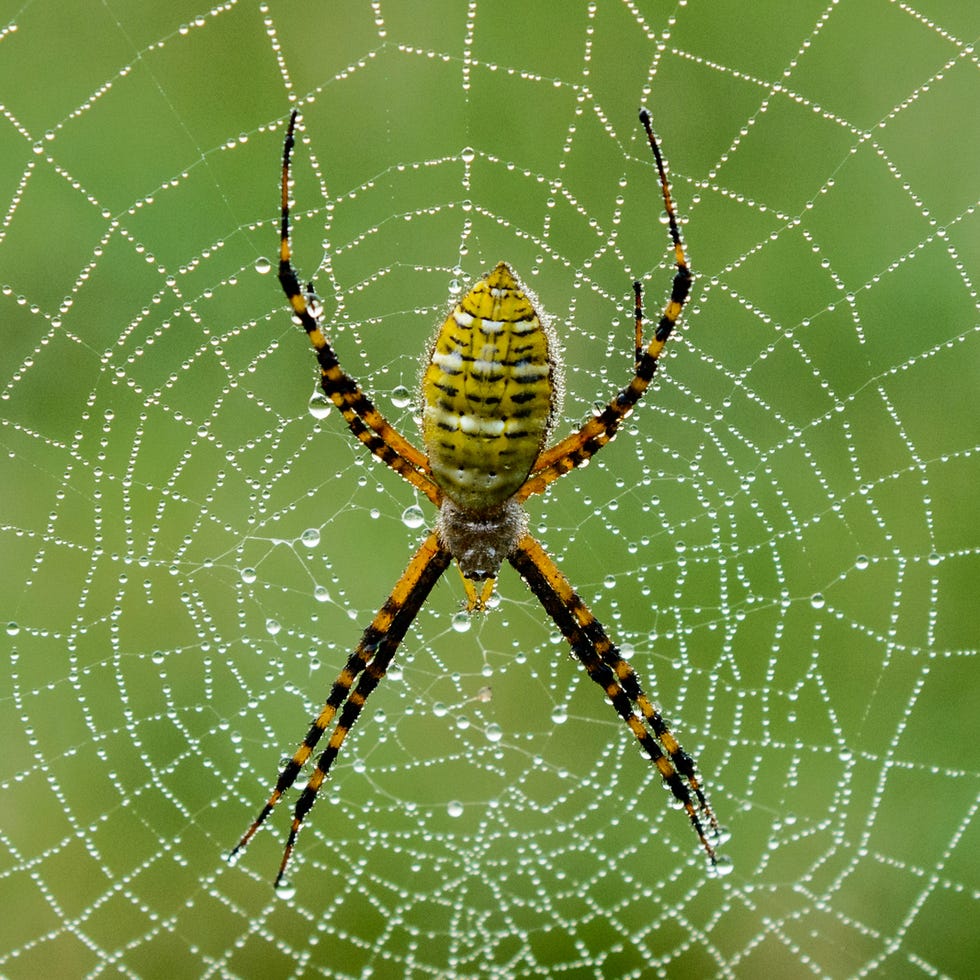 erniedecker//Getty Images
erniedecker//Getty ImagesWhat they look like: These are the spiders that build huge webs that you can see in the morning covered in dew. “Orb weavers spin their web each day and then tear it down and rebuild the next day,” Potzler says. They can have spiny or smooth abdomens. There are tons of species and some can be difficult to distinguish from other spiders.
Where you’ll find them: They like to build their webs where they’re most likely to grab flying insects, Potzler says. They may build webs on decks or the exterior of your house, especially if you have outside lighting (which attracts the flying insects they like to eat).
Size: The larger species can exceed a body length of 1 inch
while the smallest species rarely reach ¼ of an inch
Color: Usually brown or gray
Can they harm you? Not really. While they can bite, it won’t usually cause an issue for most people, Potzler says.
Grass spiders
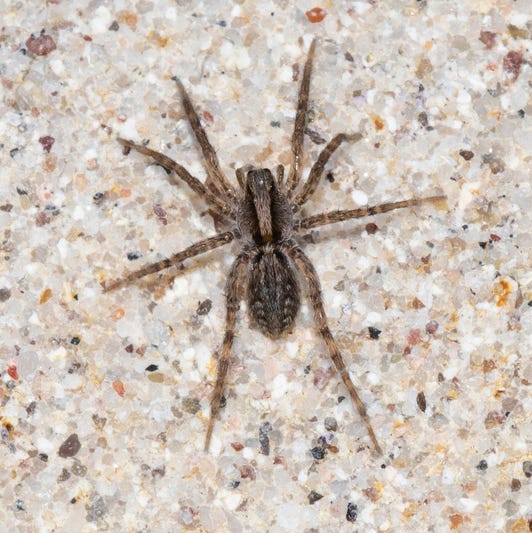 rkhphoto//Getty Images
rkhphoto//Getty ImagesWhat they look like: It’s a “very ordinary-looking” brown spider, Potzler says. It can be confused with the brown recluse, but grass spiders have long spinnerets (finger-like appendages at the end of the abdomen), which the brown recluse does not have, he says.
Where you’ll find them: They tend to like to hang out around the foundations of homes, but Potzler says that sometimes males will find their way inside while looking for a mate.
Size: Females are about ½ to ¾ inch long (not including legs) and males are slightly smaller
Color: Dark brown
Can they harm you? They can bite but “there are no reported cases of medical significance,” Potzler says.
How to get rid of spiders

Spiders are relatively easy pests to get rid of, says Emma Grace Crumbley, entomologist for Mosquito Squad. “They do not have wings and cannot fly away, and while some spiders are speedy and can jump to avoid threats, most spiders are slow-moving enough to either trap them or squish them.” While it’s true that bug sprays will kill spiders on contact, the risk of spraying and missing the spider now leaves pesticide on the walls, floor, ceiling, or wherever you sprayed it, says Crumbley, so she doesn’t recommend using a chemical aid in your removal plan.
Sans chemicals, here are a few ways you can get rid of spiders that Crumbley approves of:
1. Catch & release
When possible, Crumbley advocates for catching spiders and releasing them back outdoors. “Spiders are beneficial bugs that help control other pest insects such as flies, adult mosquitoes, ants, etc.,” she says. Capture and release can look like using a cup and a piece of paper to trap and move the spider outdoors or handling the spider and manually placing it outside the home (to the comfort of the person), she suggests.
2. The boot method
This one feels pretty self-explanatory, says Crumbley. “My advice, try not to squish spiders on walls or carpets as they may leave a stain,” she says. Also, while this method may be a knee-jerk reaction, remember that spiders are nimble. You may lose the spider in the chase and be left with a greater anxiety about where the spider managed to scurry off to, she warns.
3. The paper towel method
Again, pretty self-explanatory—just replace the word “boot” with “paper towel.” Keep in mind that if the spider is identified as dangerous to human health (like a black widow or brown recluse), then proceed with caution in disposing of it, says Crumbley.
What is the most common house spider?

According to the National Wildlife Federation, the American house spider is the spider most commonly found in homes in the United States. However, spider populations vary greatly across the world and the answer to this question changes depending on location.
Are common house spiders harmful?

Not exactly. It can actually be a good thing to have spiders around. “The majority of the spiders cause us no harm and are predators of pests,” says Pereira. Translation: They get rid of other bugs—like roaches, flies, and millipedes—that you also do not want to deal with.
How do I identify the type of spider in my house?

Spiders are identified by their size, color, and other physical characteristics, as outlined in this list. However, it can be difficult to analyze them accurately without the help of a professional, given that many share attributes.
What do common house spiders eat?

Spiders trap or hunt and eat insects, including flies and mosquitoes.
When should you call someone about a spider problem?

The good news is that spiders are easy to manage yourself, says Crumbley. To prevent them from taking over an area, you can do the following:
Keep the infested area tidy: This may already be the norm for living rooms and bedrooms, but extra care should be taken for crawl spaces, basements, attics, garages, and other less looked-after areas, says Crumbley.
Check for hidden gaps and cracks: This includes your home’s foundation, if applicable, as that’s a typical entry point. “Common house spiders can wander into homes through tiny cracks and gaps around doors and windows,” Crumbley explains. Sealing these gaps makes it harder for spiders to get in.
Knock down webs: This cleans up the appearance of the home and removes any spiders in the web. You can use a duster or a broom if needed.
Control other pests: Remove spider food sources. If you have a bad roach or fly problem, that may also attract spiders and lead to an infestation. In this instance, it’s a good idea to call a professional pest control company.x